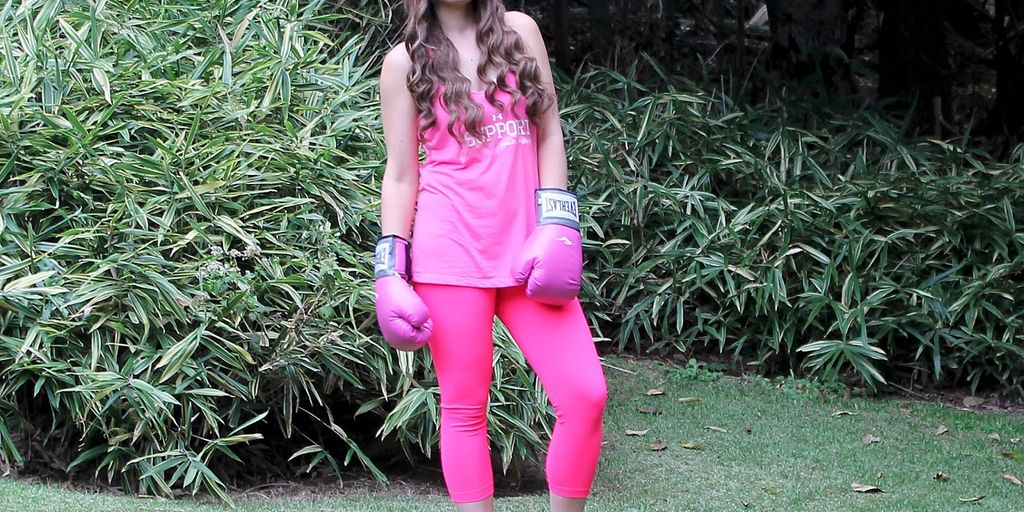
The Ultimate Guide to Choosing the Right Material for Your Yoga Mat
Choosing the right material for your yoga mat is crucial for ensuring a comfortable, safe, and sustainable practice. With a variety of materials available, each offering unique benefits and drawbacks, it can be overwhelming to make the best choice. This guide will walk you through the different types of yoga mat materials, their eco-friendliness, durability, comfort, allergy considerations, cost, and environmental impact, helping you make an informed decision.
Key Takeaways
- Understand the different materials available for yoga mats, including natural rubber, PVC, and TPE.
- Explore eco-friendly options such as cork, organic cotton, and jute for a more sustainable practice.
- Consider the durability and longevity of each material, including wear and tear, maintenance tips, and material lifespan.
- Evaluate comfort and support by examining thickness, cushioning, texture, grip, and temperature sensitivity.
- Take into account allergy considerations, including hypoallergenic options, common allergens, and skin sensitivity.
Understanding Different Yoga Mat Materials
Choosing the right yoga mat material is crucial for your practice. Each material offers unique benefits and drawbacks, making it essential to understand their properties before making a decision.
Eco-Friendly Yoga Mat Options
When it comes to choosing an eco-friendly yoga mat, there are several materials that stand out for their sustainability and minimal environmental impact. These options not only provide a healthier choice for your yoga practice but also contribute to a greener planet.
Cork
Cork yoga mats are a popular eco-friendly option. They are made from the bark of cork oak trees, which can be harvested without harming the tree. Cork is naturally antimicrobial, providing a clean and hygienic surface for your practice. Additionally, cork mats offer excellent grip and become even more slip-resistant when wet, making them ideal for hot yoga sessions.
Organic Cotton
Organic cotton mats are another sustainable choice. These mats are made from cotton grown without the use of synthetic pesticides or fertilizers, reducing their environmental footprint. Organic cotton mats are soft and provide a comfortable surface for yoga, though they may not offer as much cushioning as other materials. They are also machine washable, making maintenance easy.
Jute
Jute yoga mats are made from the fibers of the jute plant, which is a highly renewable resource. Jute mats are biodegradable and provide a natural, earthy feel. They offer good grip and are often combined with other materials like PER (Polymer Environmental Resin) to enhance durability. Jute mats are an excellent choice for those looking to minimize their environmental impact while enjoying a sturdy and reliable yoga mat.
Choosing an eco-friendly yoga mat is not just about personal health; it's about making a conscious decision to support sustainable practices and reduce environmental harm.
Durability and Longevity of Yoga Mat Materials
Wear and Tear
Yoga mats are subject to significant wear and tear, especially with regular use. High-quality materials like natural rubber and TPE tend to withstand more rigorous practices compared to PVC. It's essential to consider durability when choosing a mat, as it directly impacts the mat's lifespan.
Maintenance Tips
Proper maintenance can significantly extend the life of your yoga mat. Regular cleaning, avoiding direct sunlight, and storing the mat in a cool, dry place are crucial steps. For instance, natural rubber mats should be cleaned with a mild soap solution and water, while PVC mats can be wiped down with a damp cloth.
Material Lifespan
Different materials have varying lifespans. Here's a quick comparison:
| Material | Average Lifespan |
|---|---|
| Natural Rubber | 1-2 years |
| PVC | 2-3 years |
| TPE | 1-2 years |
When considering the best yoga mats for beginners, it's important to consider durability, eco-friendliness, and easy cleaning for a sustainable and effective yoga practice.
Comfort and Support: Finding the Right Balance
Thickness and Cushioning
When selecting a yoga mat, consider material, thickness, cushioning, grip, and traction for an enhanced yoga experience. The thickness of a yoga mat can significantly impact your comfort during practice. Thicker mats provide more cushioning, which is beneficial for poses that put pressure on your joints. However, they can also make balancing poses more challenging.
Texture and Grip
The texture of your yoga mat affects the grip and traction you have during practice. Mats with a textured surface can prevent slipping, which is crucial for maintaining stability in various poses. Natural rubber mats often offer excellent grip, even in sweaty conditions.
Temperature Sensitivity
Some yoga mat materials are sensitive to temperature changes. For instance, PVC mats can become slippery when wet, while TPE mats maintain their grip regardless of moisture levels. It's important to choose a mat that performs well in the environment where you practice.
Finding the right balance between comfort and support in a yoga mat is essential for a superior practice. Take into account the material, thickness, and texture to ensure you have the best experience possible.
Allergy Considerations for Yoga Mat Materials
When selecting a yoga mat, it's crucial to consider potential allergens that could affect your practice. Exposure to PVC and phthalates through inhalation and skin contact can result in various allergic reactions. For those with sensitive skin, choosing hypoallergenic options can make a significant difference in comfort and safety.
Hypoallergenic Options
Hypoallergenic yoga mats are designed to minimize the risk of allergic reactions. Materials like natural rubber, organic cotton, and cork are excellent choices for those with allergies. These materials are less likely to contain harmful chemicals and are generally more skin-friendly.
Common Allergens
Common allergens found in yoga mats include latex, PVC, and certain dyes. Latex, in particular, can cause severe reactions in individuals with latex allergies. It's essential to read product labels carefully to avoid these substances.
Skin Sensitivity
For individuals with sensitive skin, the texture and composition of the yoga mat can play a significant role. Mats made from natural materials like jute and organic cotton are often gentler on the skin. Additionally, avoiding mats with harsh chemicals can help reduce the risk of skin irritation.
Choosing the right yoga mat material can significantly impact your overall practice experience, especially if you have allergies or sensitive skin.
Cost vs. Value: Investing in a Quality Yoga Mat
When it comes to choosing a yoga mat, understanding the balance between cost and value is crucial. Investing in a high-quality mat can make a significant difference in your practice, providing better support and durability over time.
Budget-Friendly Materials
For those on a budget, there are several materials that offer good performance without breaking the bank. PVC mats are often the most affordable, but they come with environmental concerns. TPE mats are a bit pricier but offer a good balance of cost and eco-friendliness.
Premium Options
If you're willing to invest more, natural rubber and cork mats are excellent choices. These materials not only offer superior grip and comfort but are also more sustainable. While the initial cost is higher, the long-term benefits often justify the investment.
Long-Term Investment
A high-quality yoga mat can last for years, making it a wise long-term investment. Consider the benefits of high-quality mat, such as enhanced durability and better performance, when making your decision. Over time, a durable mat can save you money by reducing the need for frequent replacements.
Choosing the right yoga mat is not just about the initial cost but also about the value it brings to your practice over time. Make an informed decision to find the best yoga mat for your daily routine.
Sustainability and Environmental Impact of Yoga Mat Materials
When choosing a yoga mat, it's essential to consider its biodegradability. Materials like natural rubber and cork are known for their ability to break down naturally, reducing long-term waste. In contrast, synthetic materials like PVC can take hundreds of years to decompose, contributing to environmental pollution.
Recyclability is another crucial factor. Some yoga mats, especially those made from TPE, can be recycled, which helps in minimizing waste. However, not all recycling facilities accept these materials, so it's important to check local guidelines.
The manufacturing process of yoga mats can have a significant environmental impact. Mats made from natural, renewable fibers like organic cotton and jute generally have a lower carbon footprint compared to those made from synthetic materials. Additionally, eco-friendly manufacturing practices, such as using water-based adhesives and non-toxic dyes, further reduce the environmental impact.
Choosing a yoga mat made from sustainable materials not only benefits you but also helps protect the environment for future generations.
Choosing the right yoga mat is crucial for both your practice and the environment. At Yune Yoga, we offer a range of eco-friendly mats made from sustainable materials that not only support your poses but also reduce your carbon footprint. Explore our collection and make a positive impact today!
Conclusion
Choosing the right material for your yoga mat is a crucial decision that can significantly impact your practice. By understanding the different materials available—such as PVC, TPE, natural rubber, and cork—you can make an informed choice that aligns with your needs, preferences, and values. Whether you prioritize durability, eco-friendliness, comfort, or grip, there's a yoga mat material out there that's perfect for you. Take the time to consider your options, try out different materials if possible, and invest in a mat that will support your journey towards better health and well-being.
Frequently Asked Questions
What is the best material for a yoga mat?
The best material for a yoga mat depends on your personal preferences, including factors like comfort, durability, eco-friendliness, and budget. Common materials include natural rubber, PVC, and TPE.
Are eco-friendly yoga mats durable?
Yes, eco-friendly yoga mats made from materials like cork, organic cotton, and jute can be quite durable. However, their lifespan may vary based on usage and maintenance.
How thick should a yoga mat be for optimal comfort?
Yoga mats typically range from 1/16 inch to 1/4 inch in thickness. Thicker mats provide more cushioning, which can be beneficial for joint support, while thinner mats offer better stability and balance.
Can I be allergic to my yoga mat?
Yes, some people may be allergic to certain materials used in yoga mats, such as latex in natural rubber mats. If you have sensitive skin or known allergies, consider hypoallergenic options.
How do I clean and maintain my yoga mat?
Regular cleaning with a mild detergent and water can help maintain your yoga mat. Some mats are machine washable, while others require hand washing. Always follow the manufacturer's care instructions.
Is it worth investing in a premium yoga mat?
Investing in a premium yoga mat can be worth it if you practice regularly and value features like enhanced durability, better grip, and eco-friendly materials. A high-quality mat can offer better performance and longevity.


